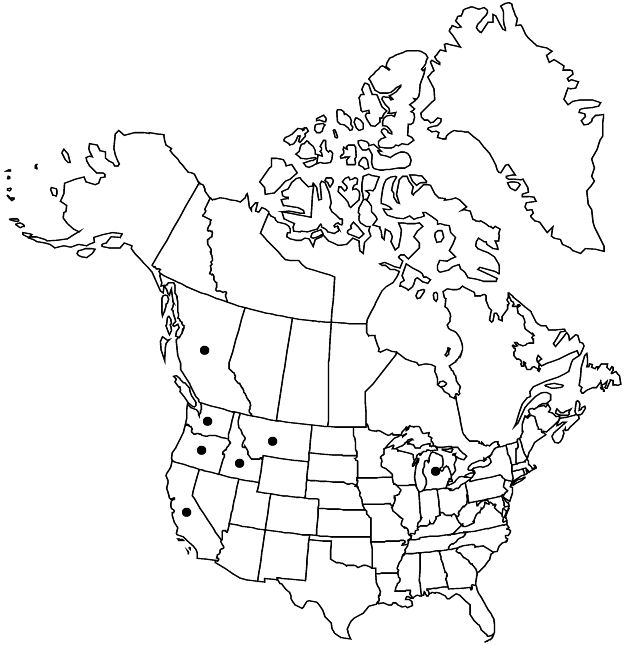Difference between revisions of "Ceanothus sanguineus"
Fl. Amer. Sept. 1: 167. 1813.
FNA>Volume Importer |
FNA>Volume Importer |
(No difference)
| |
Revision as of 18:22, 24 September 2019
Shrubs, deciduous, 1–2.5 m. Stems erect to ascending, not rooting at nodes; branchlets greenish to reddish brown, not thorn-tipped, round in cross section, flexible to ± rigid, puberulent, glabrescent. Leaves: petiole 6–25 mm; blade not aromatic, flat, ovate, ovate-elliptic, or widely elliptic, 25–100 × (17–)20–60 mm, herbaceous, not resinous, base rounded or subcordate, margins serrulate, teeth 50–100+, apex acute to rounded, abaxial surface pale green, glabrous or puberulent, especially on veins, adaxial surface green, dull, glabrate; 3-veined from base. Inflorescences axillary, paniclelike, cylindric, 5–12 cm. Flowers: sepals and petals usually white to cream, sometimes pink-tinged; nectary cream. Capsules 4–5 mm wide, weakly lobed near apex; valves smooth, usually not crested, sometimes weakly crested.
Phenology: Flowering Apr–Jul.
Habitat: Open areas in forests, clear-cuts, rocky hillsides, slopes, prairies, burns.
Elevation: 0–1400 m.
Distribution

B.C., Calif., Idaho, Mich., Mont., Oreg., Wash.
Discussion
Putative hybrids between Ceanothus sanguineus and C. velutinus have been reported from British Columbia and Oregon (H. McMinn 1944). The occurrence of C. sanguineus in the Upper Peninsula of Michigan (Keweenaw County) is a significant disjunction from the nearest locations in western Montana.
Selected References
None.